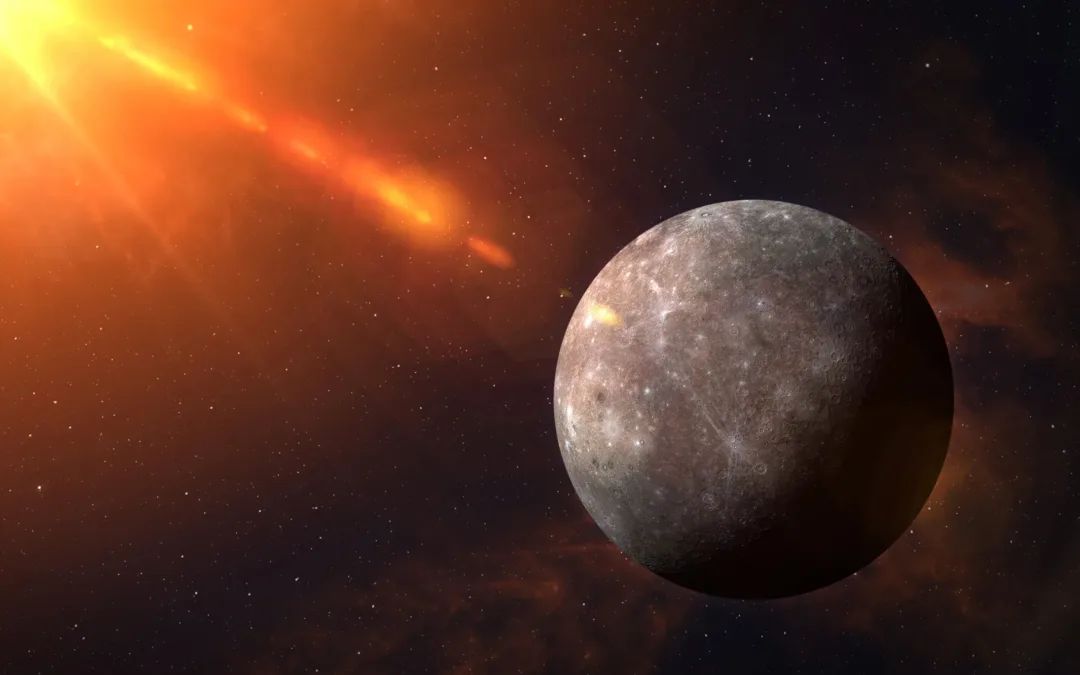
Stones found on the shore of Lake Michigan. (Photo via Rachel Kramer / Flickr)
You’ve heard of the Petoskey Stone, but what about its cousin, the Charlevoix Stone? Get the insider scoop on the most coveted rocks available in your own backyard.
MICHIGAN—When the ice starts to melt, it isn’t long before locals and tourists alike flock to Michigan’s freshwater beaches in droves. But before the swimsuit brigade heads to the shore, Michigan’s unique rocks get there first.
For most beachcombers, rock hunting is a sport best played during a leisurely stroll down the sand. It’s a cost-efficient family activity, and some of the gems you find could be worth a pretty penny to jewelry makers and home decorators. But before we tell you which stones to look for, there are some game rules you should know.
According to the Michigan Department of Natural Resources, you may only retrieve up to 25 pounds of rocks, minerals, or invertebrate fossil from Michigan’s state parks per year, and individual pieces may not exceed 25 pounds. It’s also illegal to snag any stones from National Parks, such as the Sleeping Bear Dunes or Pictured Rocks.
Now that you’re ready to hunt, here’s the list of Michigan’s most coveted beach finds.
Isle Royale Greenstone (Chlorastrolite)
Scientific Name: Pumpellyite
Lake Coast: Superior
Michigan’s official state gemstone is chlorastrolite, a name meaning “green star stone.” The green or blue gemstone carries a unique turtle shell pattern, and is usually found encased in basalt rock. Though its common name references Michigan’s most remote national park, Isle Royale, harvesting such a rock from a national park could earn you a hefty fine or even jail time. Thus, the shores of the Upper Peninsula are your best bet for locating this beauty, with the Keweenaw Peninsula its most likely location.
Michigan became the Isle Royale Greenstone’s home for the same reason the Upper Peninsula became Copper Country—the Midcontinent Rift. One billion years ago, the North American continent began to split, but the split “failed.” A new crust was formed, with deep lava flows forming into thick layers of igneous rock. The gasses in the lava created pockets within the rock, and chlorastrolite eventually formed within those pockets.
Isle Royale and the Keweenaw Peninsula are the protrusions of the volcanic rock, and Lake Superior stands today within the basin created by the rift. Because these two spots are the only places where the igneous rock layers breached the water level, they are the only places chlorastrolite can be found. Try the beach at McLain State Park, Agate Beach, or another Keweenaw Peninsula beach to locate this rarity.
Petoskey Stone
Scientific Name: Hexagonaria percarinata
Lake Coast: Michigan and Huron

Michigan’s official stone is the Petoskey Stone, which is both a rock and fossil. Its trademark hexagonal geometric vein pattern hints at its origin as fossilized coral dating back over 300 million years ago.
In the Devonian era, the Michigan waters were closer to the equator. Its warm waters were ideal for marine life like the Hexagonaria percarinata coral. The Hexagonaria percarinata coral was a coral colony. Each individual hexagon in the pattern represents a single organism, a polyp, and the circle in the center functioned as the organism’s mouth. The Hexagonaria percarinata fed on prehistoric plankton, which predated even the dinosaurs. As a stone, the coral colony exoskeleton is calcium carbonate, broken and tumbled smooth through the water. Millions of years after their lifespan, about two million years ago, glacial activity scattered these fossils across the Great Lakes area. Since the Michigan area was settled, the Petoskey Stone has been sold as a souvenir–but many people don’t realize just how ancient they are.
Petoskey Stones are not exclusively found on the shoreline–they’re just easier to see when wet. Dry, the Petoskey Stone looks similar to typical gray limestone and may be found in odd places like roadbeds and gravel pits.
Petoskey Stones are most frequently found in the Northern Michigan town of its namesake, Petoskey. However, they are also found throughout the region and beyond, including in Charlevoix, Harbor Springs, Northport, Glen Arbor, and Empire. A wide variety of fossils from the Devonian era, including Petoskey Stones, may be found in the Rockport State Recreation Area in Alpena, which was a former limestone quarry.
Charlevoix Stone
Scientific Name: Favosites
Lake Coast: Michigan and Huron
As another fossilized coral rock in the Northern Michigan region, the Charlevoix Stone is considered a “cousin” to the Petoskey Stone—and a frequent impersonator of its more well-known family member.
To an untrained eye, the two stones are nearly identical. Upon inspection, though, the Charlevoix Stone’s pattern uses smaller geometric shapes. Additionally, the shape is more irregular than the Petoskey Stone. Why? Because they’re entirely different species.
Though it might not get points for popularity, it has more than enough in longevity. The Charlevoix Stone’s progenitor genus, Favosites, existed on earth four times longer than the Petoskey Stone’s Hexagonaria genus.
The Charlevoix Stone is found in most of the same places as the Petoskey Stone, though is most likely to be found along Lake Michigan beaches.
Leland Blue
Lake Coast: Michigan
Despite its beautiful blue hue, the Leland Blue isn’t really a natural stone at all. It’s technically a “slag,” a byproduct of iron smelting. Despite this, it’s often referred to as “Northern Michigan gold.”
Various minerals were separated from iron ore during the smelting process. These minerals were frequently dumped as a waste product into water, where the lake water would smooth the edges. When the iron industry collapsed in the late 19th century, the slags were dumped into various bodies of water en masse. The bubbles from the smelting process show up as round holes within the slag, and you might even see some remaining iron. Today, Leland Blues pop up on the shores of both of Michigan’s peninsulas.
READ MORE: The Numbers of So-Called Vampire Fish in the Great Lakes Are on the Rebound. What Have We Learned?
No new Leland Blues are being created, though some imitations and recreations do exist. True to its name, the Leland Blue is most commonly found around the Northern Michigan town of Leland, former home of the Leland Lake Superior Iron Company. Some of the most popular Leland Blue hunting spots are Van’s Beach, North Beach, and Hall Beach.
Yooperlite
Scientific Name: Sodalite-syenite
Lake Coast: Superior
A rock that actually glows? It’s not science fiction. In fact, you can find it right here in Michigan.
Yooperlite might be the newcomer to the Michigan rock scene, but it’s hardly new. Erik Rintamaki first confirmed the presence of the sodalite-syenite in Michigan in 2017. He named the discovered rocks Yooperlite in reference to the loving nickname of “Yoopers” for Upper Peninsula residents.
The syenite of the Yooperlite makes it look similar to granite to the naked eye, but the sodalite in it reacts to ultraviolet light by glowing orange and yellow. These glowing stones are believed to originate from the Caldwell Alkaline Complex in Canada, having been transported to the Mitten by glacial activity.
Yooperlites have so far been connected to the Grand Marais area and the Keweenaw Peninsula. A filtered 365nm UV light is recommended for Yooperlite hunting.
Lake Superior Agate
Lake Coast: Superior

The agate is a common semiprecious stone available in a variety of colors and subtypes. It is made of a microcrystalline quartz, often manifesting in banded patterns and vivid colors, and is commonly used in rock tumblers. The Lake Superior Agate is the subtype originating from the Great Lakes.
The Lake Superior Agate has a rich color scheme caused by iron oxidization. It manifests in banded patterns of colors within the red, orange, and yellow color spectrums. Agates are formed within volcanic and metamorphic rocks. The Lake Superior Agate was formed within the lava flows of the Midcontinent Rift System which also created the Isle Royale Greenstone and Michigan’s Copper Country. The Lake Superior Agates with perfectly straight, parallel bands are known as “water-level agate” which indicate a higher position inside the lava flow during formation. The rarest and most popular form of the Lake Superior Agate is known as “eye agate” which has perfectly round bands that look like circles on the stone’s surface. A cousin of the Lake Superior Agate is the Lake Michigan Cloud Agate, but unlike the Lake Superior Agate, the Lake Michigan Cloud Agate formed inside limestone and dolomite as opposed to volcanic lava.
You can find Lake Superior agates in the Upper Peninsula along the shores of Lake Superior. Muskallonge State Park and Whitefish Point Beach are two popular agate-hunting spots, but these stones may be found anywhere east of Grand Marias. The Superior Trails website features a photographic guide to distinguishing the Lake Superior Agate from similar rocks.
Pudding Stone
Lake Coast: Michigan and Huron
The Pudding Stone is not an actual stone. Instead, it’s a conglomerate, a stone with more than one stone type within it. Its name is a reference to raisin or plum pudding, with which the Pudding Stone shares a resemblance. Michigan’s Pudding Stone has a base of white quartzite, a metamorphic rock, with dots of darker stones like jasper. On rare occasions, more precious stones, such as sapphire, diamond, and zircon, have been found in Pudding Stones. These stones are common in Michigan, but can be found throughout the world and even on Mars, as photographed by NASA’s Curiosity.
Like many other stones, the Pudding Stone came to Michigan through glacial activity. At least 2.3 billion years ago, rapid streams tumbled stones like jasper and hematite smooth. Those stones settled into mounds of sand, as deposited by the stream. Then, the combination of the stones and sand hardened, eventually forming into solid quartzite through intense heat and pressure beneath the earth’s surface. The Laurentide Ice Sheet picked these Pudding Stones up as it slowly migrated south from Canada, finally depositing them in their Michigan destination about 24,000 years ago.
Michigan Pudding Stones make common lawn decorations, as well as jewelry and ornaments. Some of Michigan’s more popular locations for finding them include Mackinaw City, Cheboygan, and Drummond Island in the Upper Peninsula.
READ MORE: Foraging Tips to Help Michiganders Find True Morel Mushrooms

VIDEO: Trump isn’t the only republican facing charges for alleged financial crimes
https://www.tiktok.com/@gandernewsroom/video/7361494909938978090 A whole lot of Michigan Republicans and lobbyists are facing criminal charges for...

VIDEO: It’s expensive to be poor in Michigan
https://www.tiktok.com/@gandernewsroom/video/7361154790300060974 Ever heard of predatory payday loans? Here’s how new laws could help protect...

Here’s everything you need to know about this month’s Mercury retrograde
Does everything in your life feel a little more chaotic than usual? Or do you feel like misunderstandings are cropping up more frequently than they...

The ’Gander wins multiple 2023 Michigan Press Association awards
MICHIGAN—The ’Gander Newsroom has earned multiple awards in the 2023 Michigan Press Association Better Newspaper Contest. The awards were announced...

Michigan Republicans ask Supreme Court to restrict medication abortion access
A lawsuit supported by Republicans could disrupt access to the most common form of abortion—even in Michigan, where reproductive rights are...




